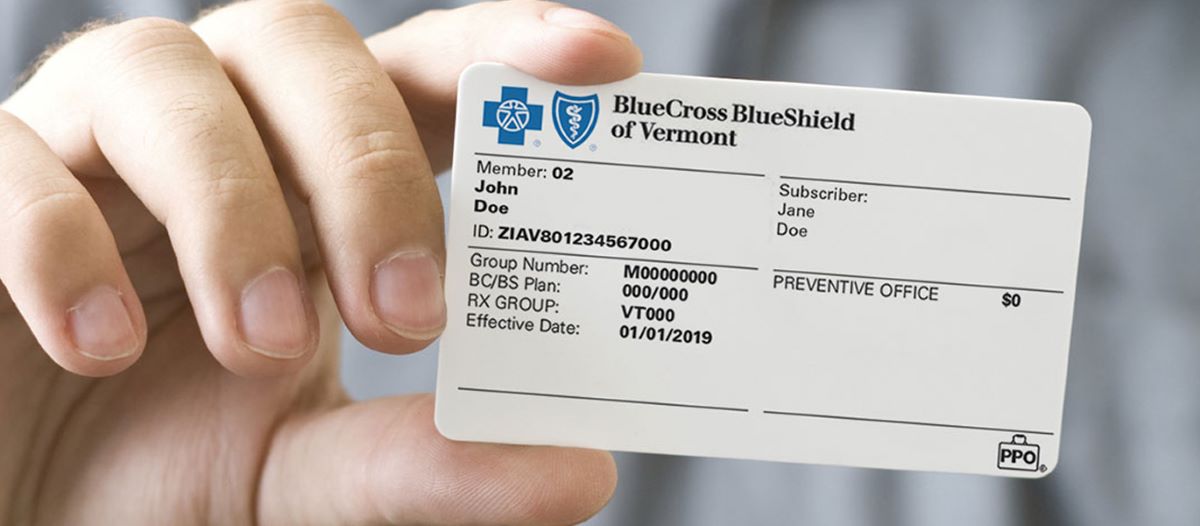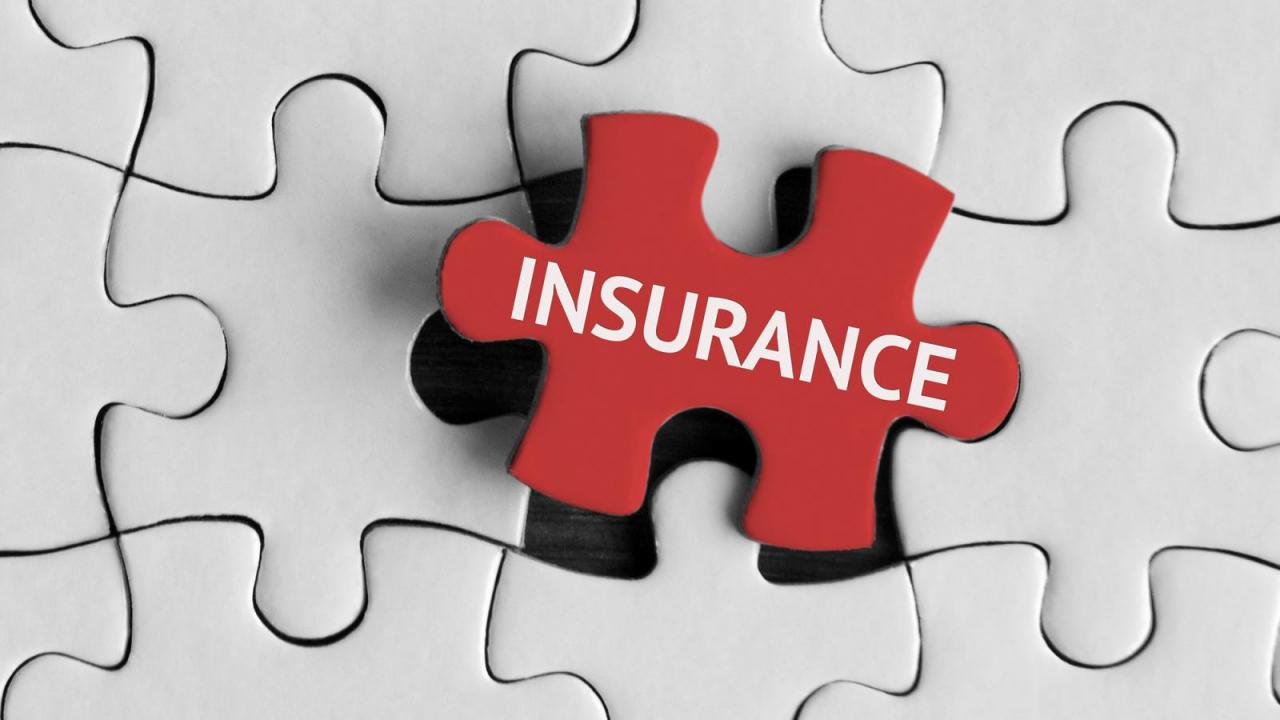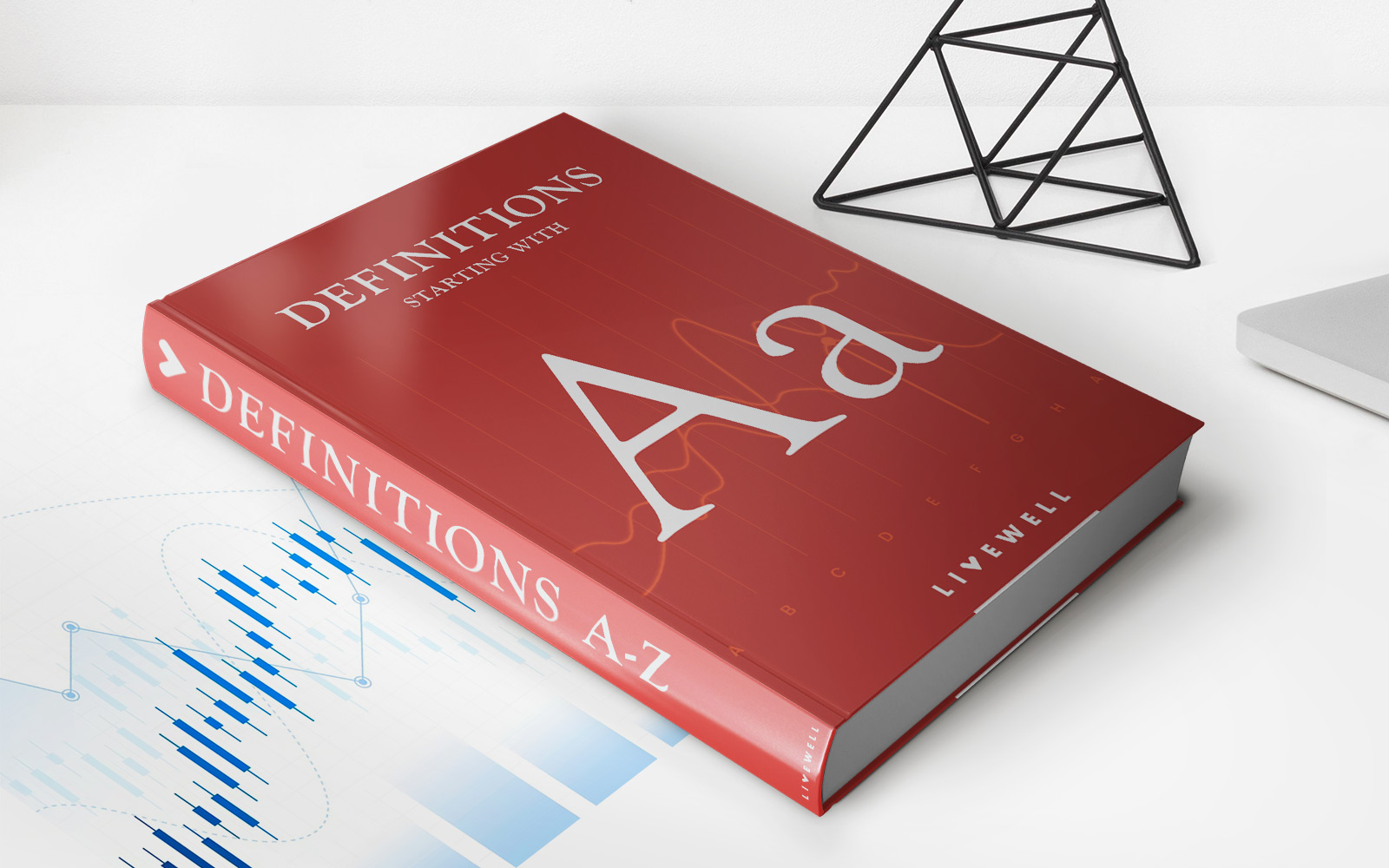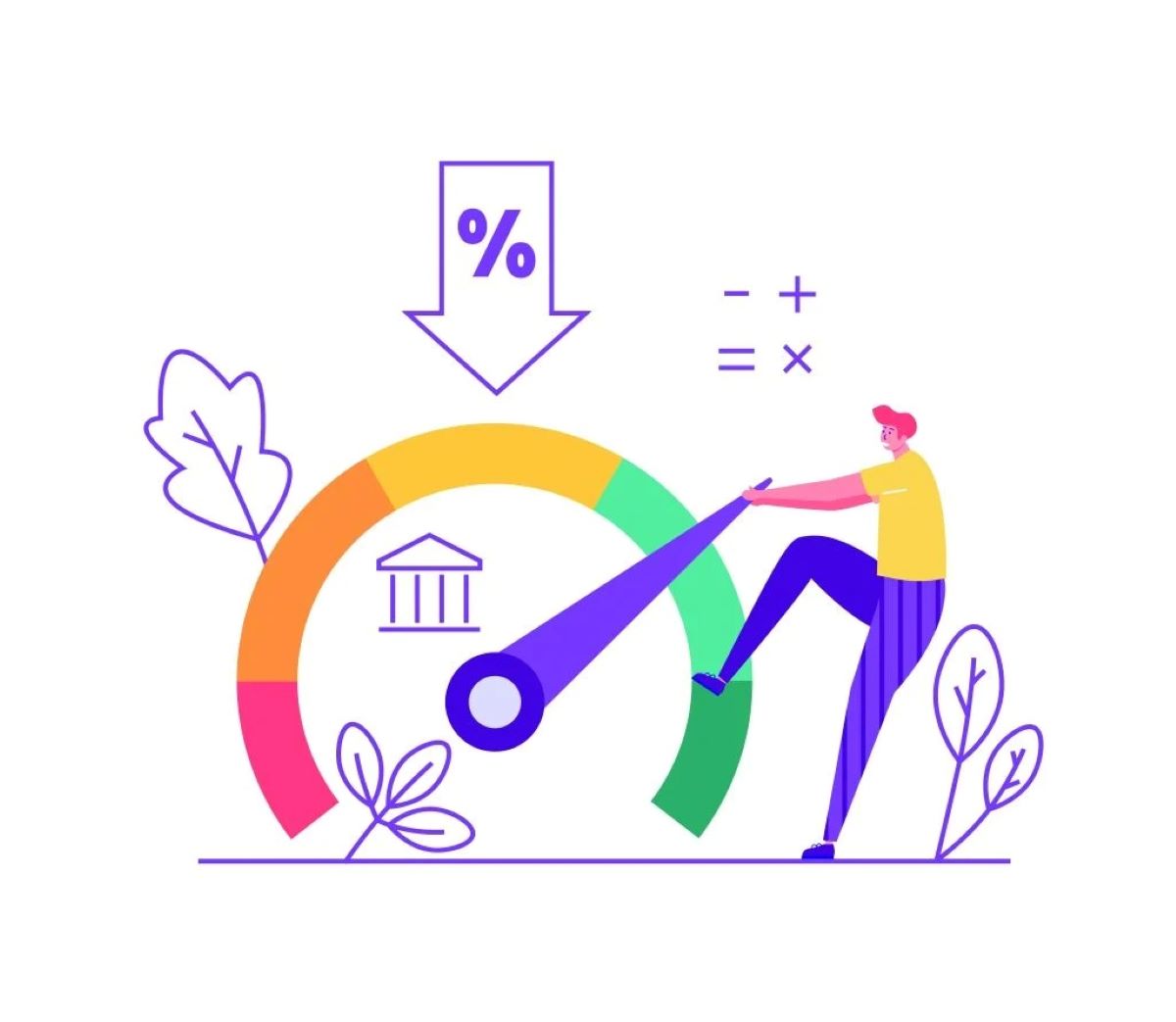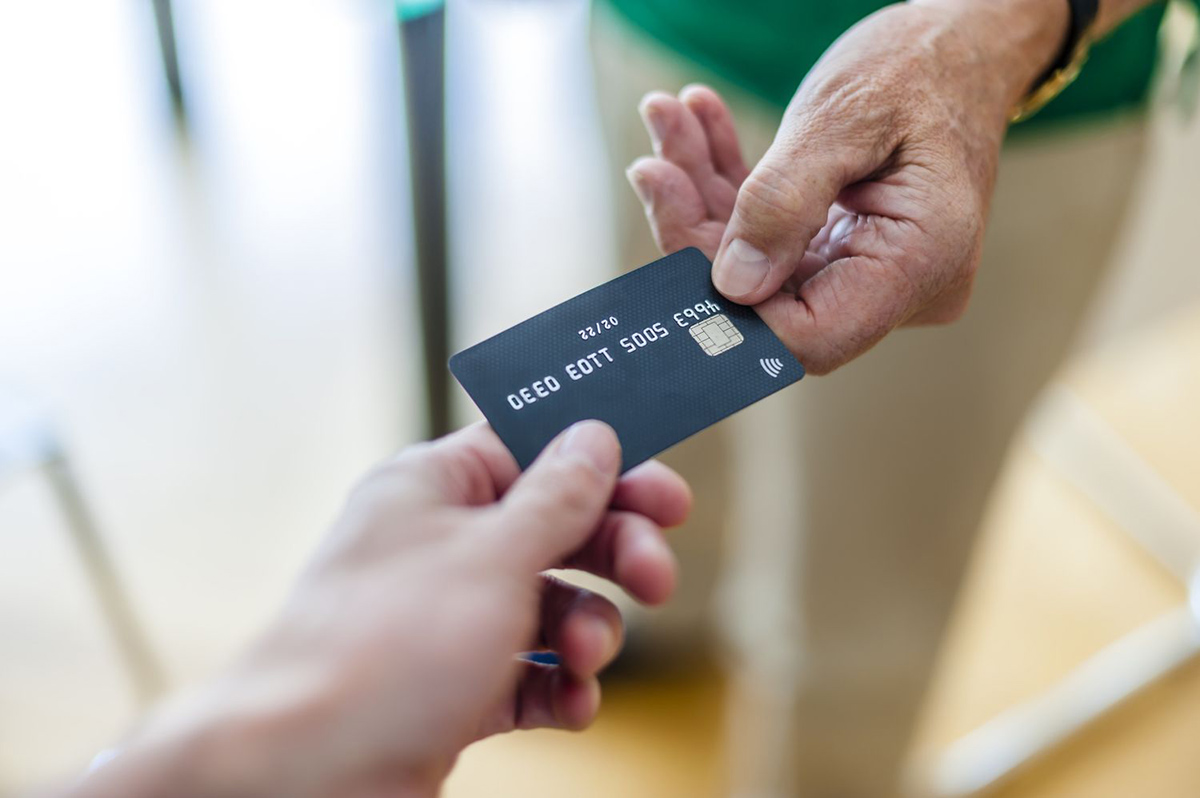

Finance
What Is A BIN On Insurance Card?
Published: November 28, 2023
Learn what a bin-on insurance card is and how it can help you manage your finances. Find out how this innovative solution can streamline insurance processes and simplify your financial planning.
(Many of the links in this article redirect to a specific reviewed product. Your purchase of these products through affiliate links helps to generate commission for LiveWell, at no extra cost. Learn more)
Table of Contents
Introduction
Welcome to the world of insurance, where understanding the various types of coverage and policy options can sometimes feel overwhelming. One particular aspect of insurance that often causes confusion is the concept of a Bin-On insurance card. If you’re unfamiliar with this term, you’re not alone. Many individuals are unsure about what a Bin-On insurance card is and how it can benefit them.
In simple terms, a Bin-On insurance card is a document that serves as proof of insurance coverage. It is typically issued by insurance companies to policyholders and is used to provide evidence of insurance to third parties, such as law enforcement officers or healthcare providers. This card contains important information such as the policyholder’s name, the insurance company’s contact information, and the effective dates of coverage.
Having a Bin-On insurance card is essential for anyone who wants to demonstrate that they are properly insured. It serves as a tangible piece of evidence that can be presented when needed, giving assurance to others that the policyholder has the necessary coverage in place.
Throughout this article, we will delve deeper into the definition and purpose of a Bin-On insurance card, explain how it works, outline its benefits and limitations, and provide guidance on how to obtain one. By the end, you’ll have a clear understanding of this important document and its role in the world of insurance.
Definition of a Bin-On Insurance Card
A Bin-On insurance card is a document that serves as proof of insurance coverage. It is typically issued by insurance companies to their policyholders and is designed to provide evidence of insurance in situations where it may be required, such as during a traffic stop or when seeking medical treatment.
The term “Bin-On” is an acronym that stands for “Binder Identification Number – On Demand,” which indicates that the card is associated with a temporary insurance binder. A binder is a short-term agreement between the insurance company and the policyholder that provides immediate coverage until a formal insurance policy can be issued.
When a policyholder purchases a new insurance policy, there is often a time lag between the initial payment and the issuance of the official policy document. During this interim period, the insurance company provides a Binder ID Number to the policyholder, which serves as a temporary proof of coverage. This number is then included on the Bin-On insurance card, making it a valid and recognized document.
The Bin-On insurance card typically contains important information, including the policyholder’s name, the insurance company’s contact details, the policy effective dates, and the Binder ID Number. It is vital that policyholders keep this card up-to-date and accessible at all times, as it serves as proof of insurance coverage and can be requested by law enforcement officers, healthcare providers, or other third parties.
It’s important to note that while a Bin-On insurance card is associated with a temporary binder, it does not replace the need for a formal insurance policy. The binder and accompanying card provide temporary coverage until the policy is officially issued, at which point the policy document becomes the primary proof of insurance.
Now that we understand the definition of a Bin-On insurance card, let’s explore its purpose and why it is essential for policyholders to have one.
Purpose of a Bin-On Insurance Card
The primary purpose of a Bin-On insurance card is to serve as proof of insurance coverage. It provides policyholders with a tangible document that they can present to various parties to demonstrate that they have valid insurance in place. Here are some key purposes of a Bin-On insurance card:
- Compliance: One of the main purposes of a Bin-On insurance card is to ensure compliance with the law. In many jurisdictions, it is a legal requirement to have auto insurance or other types of insurance coverage. By carrying a Bin-On insurance card, policyholders can easily prove that they are complying with these regulations.
- Verification during Traffic Stops: When pulled over by law enforcement officers during a traffic stop, motorists are often asked to provide proof of insurance. The Bin-On insurance card serves as an easily accessible document that confirms that the vehicle is insured, providing peace of mind to both the policyholder and the officer.
- Access to Medical Services: In the realm of healthcare, a Bin-On insurance card is crucial for receiving timely medical treatment. Healthcare providers often require proof of insurance before rendering services, especially in non-emergency situations. By presenting the Bin-On insurance card, policyholders can quickly and efficiently verify their coverage, facilitating the medical billing and claims process.
- Interaction with Insurance Companies: The Bin-On insurance card can also be used as a reference when policyholders communicate with their insurance company. It contains essential information, such as policy numbers and contact details, making it easier for policyholders to reference their coverage when making inquiries, initiating claims, or updating their policy information.
- Peace of Mind: Lastly, the Bin-On insurance card provides policyholders with peace of mind. Knowing that they have a physical document to prove their coverage in case of an accident, legal requirement, or medical need can help alleviate stress and uncertainty.
Overall, the purpose of a Bin-On insurance card is to simplify and streamline the process of verifying insurance coverage. It serves as a convenient and portable document that policyholders can use to meet legal obligations, facilitate interactions with healthcare providers, and provide proof of insurance in various situations.
Next, let’s explore how a Bin-On insurance card works and what policyholders need to know about its functionality.
How a Bin-On Insurance Card Works
A Bin-On insurance card operates as a tangible representation of an insurance binder, providing temporary proof of coverage until an official insurance policy is issued. Here’s a breakdown of how a Bin-On insurance card works:
1. Insurance Application and Binder: When a policyholder applies for insurance coverage, the insurance company may issue a temporary insurance binder. This binder serves as a short-term agreement that provides immediate coverage while the insurance application is being processed. The binder includes a Binder ID Number, which is later included on the Bin-On insurance card.
2. Issuance of the Bin-On Insurance Card: Once the temporary binder is in place, the insurance company will provide the policyholder with a Bin-On insurance card. This card contains vital information, such as the policyholder’s name, effective dates of coverage, insurance company contact information, and the Binder ID Number.
3. Proof of Insurance: Policyholders must keep the Bin-On insurance card easily accessible at all times. In situations where proof of insurance is required, such as during a traffic stop or when seeking medical treatment, the policyholder can present the card to demonstrate that they are insured.
4. Verification Process: The individual or organization requesting proof of insurance can then review the information on the Bin-On insurance card to confirm the policyholder’s coverage. Law enforcement officers, healthcare providers, or any other relevant party may contact the insurance company using the contact information provided on the card to validate the policy’s status if necessary.
5. Transition to Official Policy: The Bin-On insurance card and the temporary binder are valid until the insurance company issues the official insurance policy. Once the policy is issued, it becomes the primary proof of insurance, superseding the Bin-On insurance card. Policyholders should carefully review the policy documents and replace the Bin-On insurance card with the official policy documentation.
It’s important to note that the Bin-On insurance card is not a substitute for the formal insurance policy. It is a temporary document that verifies ongoing coverage until the official policy is issued. Policyholders must understand that the expiration date on the Bin-On insurance card corresponds to the temporary binder’s end date and not the policy’s expiration date.
Now that we have explored how a Bin-On insurance card works, let’s look at the benefits and limitations of having one.
Benefits and Limitations of a Bin-On Insurance Card
A Bin-On insurance card offers several benefits to policyholders, but it also has some limitations. Let’s examine both the advantages and limitations of having a Bin-On insurance card:
Benefits:
- Proof of Coverage: A Bin-On insurance card serves as tangible proof that a policyholder has valid insurance coverage. It can be presented to law enforcement officers, healthcare providers, or other parties who require evidence of insurance.
- Convenience and Accessibility: The Bin-On insurance card is a compact and easily accessible document that policyholders can carry with them at all times. It provides a quick and convenient way to verify insurance coverage when needed.
- Facilitates Transactions: The card contains important policy information, such as policy numbers and insurer contact details, which can be helpful when policyholders need to make inquiries, initiate claims, or update their policy information.
- Compliance with Legal Requirements: In many jurisdictions, it is a legal requirement to have insurance coverage for various purposes, such as driving a vehicle. A Bin-On insurance card ensures that policyholders have a documented proof of compliance with these legal requirements.
- Provides Peace of Mind: Having a Bin-On insurance card gives policyholders peace of mind, knowing that they have a physical document to present in case of accidents, traffic stops, or other situations where proof of insurance is necessary.
Limitations:
- Temporary Coverage: The Bin-On insurance card represents temporary coverage provided by the binder. It is not a substitute for the official insurance policy, which will eventually be issued by the insurance company.
- Expiration Date: The expiration date on the Bin-On insurance card corresponds to the temporary binder’s end date, not the policy’s expiration date. Policyholders must be mindful of this and ensure their official policy is in place before the binder expires.
- Information Accuracy: It is essential for policyholders to review the information on the Bin-On insurance card for accuracy. Any discrepancies or outdated information should be promptly addressed with the insurance company to ensure that the card remains valid.
- Specific Use Cases: While the Bin-On insurance card is widely accepted as proof of insurance in many scenarios, some situations may require additional documentation or a specific format for verification purposes.
- Replacement with Official Policy: Once the official insurance policy is issued, the Bin-On insurance card becomes obsolete. Policyholders must replace the card with the official policy documents and carry them for future proof-of-coverage needs.
Despite the limitations, the benefits of having a Bin-On insurance card outweigh the drawbacks. It ensures compliance with legal requirements, facilitates transactions with insurance companies, and provides peace of mind in various situations.
Next, let’s explore how policyholders can obtain a Bin-On insurance card.
How to Obtain a Bin-On Insurance Card
If you’re a policyholder and need a Bin-On insurance card, follow these steps to obtain one:
- Select an Insurance Provider: Start by choosing an insurance provider that offers the coverage you need. Research and compare different insurance companies to find the one that meets your requirements.
- Purchase an Insurance Policy: Once you’ve selected an insurance provider, contact them to initiate the process of purchasing an insurance policy. Provide the necessary information, including personal details and information about the coverage you’re seeking.
- Temporary Binder Issuance: During the application process, the insurance company may issue a temporary insurance binder. This binder provides immediate coverage while the underwriting process is completed and the official insurance policy is prepared.
- Receive the Bin-On Insurance Card: Once the temporary binder is in place, the insurance company will provide you with a Bin-On insurance card. This card will contain important details, such as your name, policy effective dates, contact information for the insurance company, and the Binder ID Number.
- Review the Card for Accuracy: Carefully review the information on the Bin-On insurance card to ensure it is accurate. Verify that your name, policy effective dates, and other details are correctly stated. If you notice any errors or discrepancies, notify your insurance company immediately to rectify the information.
- Keep the Card Accessible: Store the Bin-On insurance card in a safe and easily accessible place. Keep it with you, such as in your wallet or glove compartment, so you can present it when required, such as during a traffic stop or when seeking medical treatment.
- Replace with Official Policy: Once the official insurance policy is issued, the Bin-On insurance card becomes obsolete. Replace the card with the official policy documents provided by your insurance company. These documents will become your primary proof of insurance going forward.
Remember, a Bin-On insurance card is associated with a temporary insurance binder. While it is essential for providing proof of coverage, it does not replace the need for a formal insurance policy. Always ensure that you have the official policy in place before the binder’s expiration to avoid a lapse in coverage.
If you have any questions or need further assistance, contact your insurance company directly. They will be able to guide you through the process of obtaining a Bin-On insurance card and provide any necessary clarification.
Now that we’ve discussed how to obtain a Bin-On insurance card, let’s address some frequently asked questions related to this topic.
Frequently Asked Questions
Here are some commonly asked questions about Bin-On insurance cards:
-
- What is the difference between a Bin-On insurance card and an official insurance policy?
A Bin-On insurance card is associated with a temporary insurance binder and provides proof of coverage until the official policy is issued. The official insurance policy, on the other hand, is a comprehensive document that outlines the terms, conditions, and coverage details of your insurance policy.
-
- Is a Bin-On insurance card accepted everywhere as proof of insurance?
While a Bin-On insurance card is widely recognized and accepted as proof of insurance in many situations, some entities, such as government agencies or organizations with specific regulations, may require additional documentation or a specific format for proof of insurance.
-
- Can I use my Bin-On insurance card for multiple policies?
No, a Bin-On insurance card is specific to the policy for which it was issued. If you have multiple insurance policies, you will need separate Bin-On insurance cards for each policy.
-
- What should I do if my Bin-On insurance card is lost or stolen?
If your Bin-On insurance card is lost or stolen, contact your insurance company immediately. They will assist you in replacing the card and ensuring that your coverage is not compromised.
-
- Can I use a digital copy of my Bin-On insurance card?
In many cases, digital copies of the Bin-On insurance card are accepted as valid proof of insurance. However, it’s always a good idea to check with local regulations or the requesting party to confirm their acceptance of digital documents.
-
- When should I replace my Bin-On insurance card with the official policy documents?
You should replace your Bin-On insurance card with the official policy documents as soon as the policy is issued by your insurance company. The official policy documents become the primary proof of insurance, while the Bin-On insurance card becomes obsolete.
If you have any other questions or concerns regarding Bin-On insurance cards, it’s best to reach out to your insurance company directly. They can provide personalized assistance and address any specific inquiries you may have.
Now, let’s summarize what we’ve discussed so far.
Conclusion
A Bin-On insurance card is an essential document that serves as proof of insurance coverage. It provides policyholders with a tangible and easily accessible way to demonstrate their insurance status in various situations, such as during a traffic stop or when seeking medical treatment.
Throughout this article, we have explored the definition of a Bin-On insurance card, its purpose, how it works, and its benefits and limitations. We’ve also discussed how policyholders can obtain a Bin-On insurance card and provided answers to frequently asked questions related to this topic.
Having a Bin-On insurance card offers numerous advantages, including compliance with legal requirements, convenience and accessibility, and peace of mind. It simplifies the process of verifying insurance coverage and ensures that policyholders have a documented proof of their insurance status when needed.
While a Bin-On insurance card has limitations, such as temporary coverage and the need to replace it with official policy documents, its benefits outweigh these drawbacks. Policyholders should always strive to keep their insurance information accurate and up-to-date to ensure the validity of the card.
If you have any specific questions or concerns regarding Bin-On insurance cards, it is best to contact your insurance company directly. They can provide personalized guidance and address any inquiries regarding your specific policy and coverage.
Remember to keep your Bin-On insurance card easily accessible, replace it with the official policy documents when issued, and review the information on the card for accuracy. By doing so, you can confidently prove your insurance coverage in various situations and navigate the world of insurance with confidence.
We hope this article has provided you with a comprehensive understanding of Bin-On insurance cards and their significance. Stay insured and protected!




